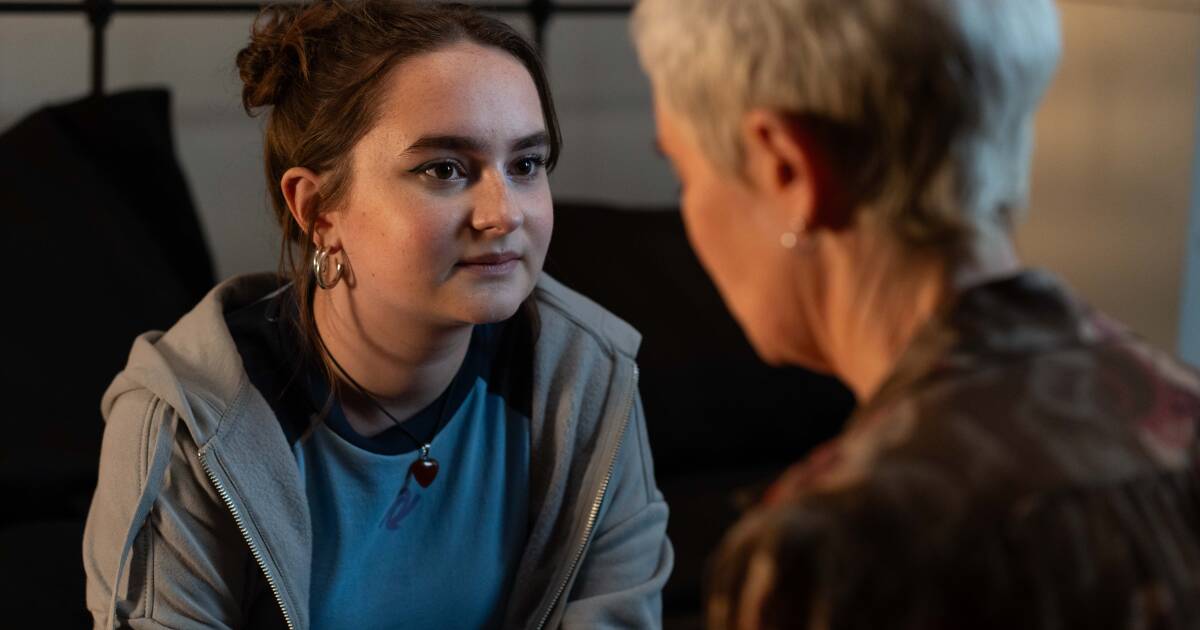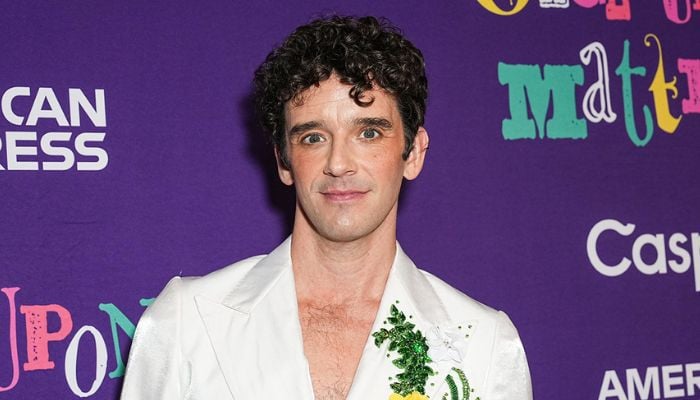Last time, we met our cast of possible murderers/witnesses for the season: Melinda, a journalist with a public persona that’s much more conservative than her real life thoughts; two young immigrants — Hassan, who’s just arrived in the UK, and Asif, who’s on the brink of taking his citizenship test; an autistic young man named Martin who lives at home with his elderly mother; and a harried mother/professor called Juliet who’s trying to manage her daughter Taylor’s reaction to her father’s death. And, speaking of: that body that our detective friends have been investigating? It’s the remains of said father/husband, Gerry. Also, as ever, Sunny and Jess have way too much drama going on in their personal lives, but that’s kinda par for the course, ya know?
Anyway, this episode kicks off with Asif dropping off his friend Hassan at a farm to begin work.
Asif: Look, I don’t know this guy personally, but I’ve heard good things. Just do the job and be cool, and I’ll be here at 5 to pick you up.
Hassan: Cool. Thank you.
Meanwhile, back at the station, Jess gives the whole crew info about our murder victim. It turns out that Gerry’s already in the system because he was charged with an assault in 2019. It looks as though he may have fallen into debt during the pandemic, and between that and the fact that his car was found abandoned near a bridge around the time he went missing, the investigators at the time assumed that he had died by suicide. Assignments (chasing down files, looking into cameras at the marsh parking lot, and more) are doled out to DS Beanpole, DS Grumpy, and DC Babyface. Jess and Sunny, presumably, will head out to interview Gerry’s widow, Juliet.
Speaking of Juliet, her day is already off to a crummy start. Arriving at school, she finds that her classroom whiteboards have been defaced with the word RACIST in giant letters. And her boss doesn’t have much to say: after last week’s discussion, he told their union that she was considering their request (which was a major soft pedal, since she actually said something much more combative).
Juliet: This is ridiculous. We’re being controlled by literal children; children who don’t actually understand real life yet! Isn’t part of our job to teach them about that?
Juliet’s Boss: The union just wants you to do a short online course. A couple of hours, tops. Isn’t it easier to say yes?
Juliet, after a long pause: No. It’s not easier, in the long run. And it’s not fair: to us, or more importantly, to the students. Principles!
Meanwhile, at Martin’s house, his mum is in desperate need of assistance to get to the toilet. And despite calling out to her son, no help is coming. Not because he’s mean spirited, but because he’s not there: he’s at his rescheduled appointment at the mental health center. Martin tells the doctor there that everything is getting worse: his job, his home, and most importantly, the fact that he’s single.
Martin: I have a right to have a girlfriend! Women can get a boyfriend any time they want!
Doctor: That’s not true; nobody has a right to have a partner. We’ve been over this.
Martin: I’m just so tired of it; not understanding anything. What did I do wrong?
Doctor: I get it; and you didn’t do anything wrong, ok? Life just isn’t fair sometimes. I’m going to increase your medicine dosage, and I’m going to refer you to a new autism service set up through our local council. It may take about a year to get an appointment; they’re pretty slammed. But I’ll see you again in three months, ok? And you should call if you have any side effects: trouble sleeping, anxiety, or violent —
The doctor unfortunately doesn’t even get a chance to finish that sentence, because at that point, Martin has stormed off in frustration. Which is understandable, because what he needs is obviously not an increased dose of medicine, but help managing his mom’s care and a way to socialize with other people who aren’t part of a toxic online community. Tthe worst part is, I can’t even put all the blame on this doctor, because he’s got a waiting room full of struggling patients, and immediately has another person to see the second Martin leaves. Just a bad situation all around!
Meanwhile, in Ireland, Melinda goes to church. The priest offers her comfort, and even invites her over for a chat at his place, but she says no: there’s just too much going on. He insists that he should apologize to her, and then she asks if he wants to grab a drink somewhere. Reader, I may have seen too much Ballykissangel, but I feel like I’m detecting a hint of a romantic past between these two. Time will tell!
At Juliet’s house, she’s just told her daughter that they’ve got an appointment with a therapist who will help them choose which kind of therapy to pursue (something they both agree is kinda goofy on paper, but at least they’re united on that) when a car pulls into the driveway. Just once it’d be nice if someone saw Jess and Sunny coming and didn’t immediately look like their world was about to end, but alas: they rarely bring good news, ya know? The detectives explain what they’ve found so far, and add that it’s possible they’ll find more of the body at some point.
Juliet, crying: How could someone do that? Cutting someone up?
Sunny: It’s pretty much always about hiding the crime — I know this sounds fake, but it’s usually not personal?
Juliet: How am I going to tell my kid? Actually, where was it you said you’d found him?
You know the drill, reader: this is the part where Juliet has a super quick flashback (in this case: pregnancy test, multi-tool, and a newspaper headline about how bad the stock market is) and then omits something from the detectives.
Juliet: I always knew it wasn’t suicide. I told them! I said it had probably been a violent death!
Sunny: Hang on, why did you think that?
Juliet: Because of the money. In 2014, he took over a lease on a pub that his uncle had managed in the 80s; it was kind of a home away from home for him. That was his main job, but we also had three rental properties; apartments. It was a lot of work; we had to be really on top of leases and mortgage payments.
Sunny: Sorry, to clarify — you did this with him?
Juliet: No, I work at the university. I teach modern history. Look, money was tight, but we were doing ok. He grew up near the pub, so he really reconnected with a lot of the local community stuff. He loved it. And then the pandemic happened, and it was kind of a perfect storm. The pub had to close, and then the tenants stopped paying rent one by one; we just got deeper and deeper into debt. And that’s when he — without talking to me about it, by the way — started borrowing money from some really shady people.
Sunny: And how did you find out?
Juliet: He was attacked in early 2021 while putting the trash bins out.
Jess: And you think it was by one of these people? Did he say that?
Juliet: At that point he hadn’t told me about the borrowing; but now looking back, yes, I think one of these guys did it.
Jess: How bad was the attack?
Juliet: He didn’t break anything, but he was knocked out. I called the cops, and he wasn’t very forthcoming with them. It was only after we had a fight about it that he finally admitted what happened. By then he owed them about 17,000.
Jess: Did you ever get a name or meet these people?
Juliet: Some guy named Markaj came to the pub looking for him soon after the attack. He said they were Albanian?
Jess: Can you talk us through the day he disappeared?
Juliet: Can I actually take a break? I need to check on my daughter.
Obviously, they say yes, and while Juliet heads out into the hallway, Jess does a little light snooping, including googling the name of Taylor’s fancy school. When Juliet returns, she explains that on the night her husband went missing, they were supposed to have a nice dinner together for their wedding anniversary. That night, Juliet had gotten home, made dinner for her daughter, and then started cooking for herself. When it started to get late, she called him, and then continued calling as it got later and later. She also called friends and a coworker from the brewery that her husband was supposed to be meeting with earlier that evening. According to her, he’d cancelled the meeting a half hour before it was meant to start, which Juliet says was unusual for her husband. Finally, at around midnight, she’d called the cops.
Jess: And what did they say?
Juliet: They assumed we’d had a fight, and that he’d be back sometime the next day. But I told them that wasn’t what happened! That wasn’t us! I called again the next day, very worried, and then finally they showed up later that day.
Sunny: And you told them about the fight, and the loan sharks?
Juliet: Of course!
Sunny: What did they say to that?
Juliet: After there were no charges on his credit card they finally upgraded the severity of the case, but I always felt like they were just checking boxes.
Sunny: So you think they thought he’d just walked out?
Juliet: Until they found his car. And then they decided he’d jumped. But I never bought it; one of our rentals was only a few blocks from where he parked. And then nine months later I saw that the officer in charge of the case had been charged with corruption! I asked for the case to be reopened and nothing happened. So I’m not a super big believer in the police! Now if you’ll excuse me I really need to be with my daughter.
Jess: We understand, and we’re very sorry about what happened with that last officer. Here’s my card; I’ll be in the office all day tomorrow when you’re ready.
On their way out, Sunny asks why Taylor isn’t at school. Juliet lies and says her daughter wasn’t feeling well, and while Jess and Sunny both are very gentle with Juliet in person, when she goes back inside, they share their doubts about her story.
Jess: Look, that is a very nice house. And her kids at a very expensive school. Feels like a life insurance situation, no?
After, we return to Martin’s place, where he’s back on his online forum of incel creeps, but has to take a brief break to let in a caretaker for his mum. The caretaker, who is very good at her job, asks some gently probing questions about whether Martin’s mum is able to get around the house and shower (the obvious answer is that her mobility is very limited, and she’s not getting enough support to shower or go to the bathroom, but Martin’s mum claims her son has been helping her). The caretaker also asks about a giant new bruise on Martin’s Mum’s face.
Martin, from across the room: She slipped, silly! When I was getting her out of the shower.
Martin’s Mum, going along with this lie: Silly me!
Caretaker: Actually, Martin, do you mind sitting down so we can have a quick chat? I’m not totally sure that mum’s being looked after as well as she needs to be.
Both family members insist that everything is fine, but Caretaker is insistent: Social Services should come do a proper assessment. Martin, overwhelmed, begins to stim to calm himself down, while Martin’s Mum insists that she can’t go into a home: she won’t leave her son alone. Later, when Caretaker leaves, Martin follows her outside and tells her he’ll get a job to pay for more assistance. She says that’s not necessary; all she cares about is that they’re both safe. But for Martin, it’s pretty cut and dry: he likes it at home, and his mum likes it too. He doesn’t want anything to change.
In Ireland, Melinda and Priest head to the pub for a chat. She explains that she’d seen her whole life mapped out before her until the accident, and is about to keep going when her phone rings: it’s her producer, and when work calls, one must answer. Turns out to be a quick one: Producer’s emailing her a story for her next segment. As before, she’s personally on the opposite side of the issue to what she’s being asked to promote, but Producer reminds her that the reason folks tune in to their show is because it’s an echo chamber that gives them exactly what they want. And what they want is extreme conservatism. Melinda ends the call and slumps at her desk, beaten.
And back at the farm, Asif has arrived to pick up Hassan just in time to see his friend get into a slightly heated discussion with the farmer. When Hassan gets into the car, we find out why: he’s been paid two hours less than the rest of the workers, and while the farmer said it was because Hassan was slower than the others, he knows he wasn’t.
Asif: So is he taking you back tomorrow?
Hassan: Seriously? I don’t care, I won’t be treated like that!
Asif: Get out of the car and go apologize.
Hassan: Are you kidding? It’s not fair!
Asif: Life’s not fair! If it was, my brother would still be alive! Now go apologize.
Ugh. Back in town, Juliet fills her daughter in on what she’s learned. Taylor is understandably quite upset and has a lot of questions. Most importantly, how was her dad killed?
Juliet: They don’t know yet. You know, it’s ok to cry or be angry. You don’t have to hold it in, ok?
Taylor: I just always thought he’d killed himself because of me. That he didn’t care about me enough to stay around, you know?
Juliet: Absolutely not! Even if that had been how he died, he adored you. You were his whole world.
Taylor, leaving the room: It’s fine. I’m fine. I’ve got homework.
Over at Jess’ house, while her kids are occupied with a video game, she can’t resist combing over her husband’s coat and jacket, looking for more mystery hairs. Not finding anything, she ends up impulsively calling her sister and inviting her to talk. A reunion? Or a fact finding mission? I’m not so sure. Meanwhile, at the pub, Sunny and Pathologist share online dating war stories, so at least someone is having fun.
The next day, Jess and Sunny have a chat about DCI Suspect from season 4 on their way to meet with Juliet in the canteen. After they get coffee sorted out for everyone, Juliet tells them that after her husband died, the tenancy of the pub had reverted, so for a while, she and her daughter were couch surfing. After some time, she’d been able to sell their rental properties, pay off the remaining mortgages, and have enough left over to buy the house where they now live. She also confirms that her husband did have life insurance, though she claims she didn’t know about it until after he was declared dead. They also ask if Gerry had had any other conflicts they should know about, and Juliet says it’s possible that he’d argued with one of their tenants. Sunny tells her they’ll need all the lease paperwork from that time, and then asks what her husband’s reputation was like in his hometown. Juliet doesn’t even hesitate: he was very well liked! Universally! That leaves Jess to ask the hardest question of all: how was their romantic relationship?
Juliet: Ours? It was fine!
Jess: Can you elaborate?
Juliet: I mean, no? It was a happy marriage?
Jess: Ok. How did you meet?
Juliet: Why do you want to know that?
Sunny: I know it sounds weird, but we like to get as much information as possible. Tiny details that seem unimportant can be critical for us.
Juliet: We met through politics; we were both members of the local labour party. He’d just been through a pretty rough divorce, but we just clicked. Four months later we were married.
Sunny: And your daughter was born when?
Juliet: Later that year.
They don’t ask any follow up questions to that, but when she leaves, they both agree that something is off. Especially when DS Beanpole arrives to tell them that, contrary to what Juliet told them, there’s no record of her asking to reopen her husband’s case after DCI Suspect was prosecuted. Next stop: full team briefing. Jess tells everyone that it’s clear that the original investigation wasn’t exactly top notch, but she also says that she’s not totally sold on this loan shark angle. They do have a lead to follow up (Markaj the possible loan shark), and Sunny will also go have a chat with DCI Suspect. DC Babyface shares that while the regular security footage from the parking lot has long been deleted, there are a few notices there about car theft, so if they get lucky, and something was stolen around the time their victim went missing, some footage may have been kept as part of a case file.
Sunny: I also have an interesting question for us to explore: the body parts were wrapped in trash bags during transport, but if you were hiding a body, you’d want to unwrap them first to accelerate decomp, right? That’s probably what happened with the rest of the pieces we haven’t found yet. But then why was the leg NOT unwrapped?
DS Beanpole: Killer was interrupted?
Sunny: That’s exactly what I thought.
Jess: Great, so DC Babyface, can you put up notices all along the path asking for witnesses to come forward?
Meanwhile, DS Beanpole will poke around with pub patrons to find out about Juliet’s marriage, and DS Grumpy will make a list of all the victim’s tenants for followup.
Over in Ireland, Melinda visits her fiance in hospital and is hit with some bad news: it turns out that he’d had a very small amount to drink the evening of his accident, and while he was nowhere near the legal limit, the other side’s legal team is now arguing that blame should be shared by both drivers (the other driver, it must be noted, was very intoxicated). If the other lawyers have their way, he won’t be able to make claims against the other driver’s insurance, and if that happens, his own insurance also won’t pay out. Actual nightmare. Her fiance is trying to keep a positive attitude, but yikes on bikes.
Not quite as nightmarish, but certainly not fun: Sunny’s next stop is to chat with DCI Suspect in prison. Gotta say, I didn’t have a perfect memory of DCI Suspect’s season, but I DO remember that he had some pretty sharp suits, and seeing him in prison-issue sweatpants is bumming me out! Also a bummer? His whole vibe.
Sunny: Feels like you didn’t even try to investigate this one, dude.
DCI Suspect: We looked into plenty of leads.
Sunny: You sure you weren’t too busy doing corruption stuff?
DCI Suspect: You’re such a hater! You’re just here to enjoy what happened to me. To be fair, I was kind of a jerk to you.
Sunny: And in the end I put you here, so… I’m not too upset about that.
DCI Suspect: Look, let’s just both agree that I’m a big embarrassment and then maybe I can actually help you with this case. Because your pity honestly makes me want to barf.
Sunny: You ARE a big embarrassment.
DCI Suspect: See, that wasn’t so hard!
Sunny: Ok, so you really thought he jumped?
DCI Suspect: Yeah, or he just left. You’ve met the wife, right? My instinct was that the marriage wasn’t quite what she was telling us, and that, plus the money stuff, felt like enough to make him just leave. The borrowed money thing… she was just pushing it too hard, you know? She came in like six times to push that angle.
Sunny: Or she came in six times because you didn’t do anything.
DCI Suspect: No dude, it didn’t make sense to do anything with that. Now, there had been an assault against him a couple of weeks before he died. One of his staff members said it was a kid who used to work there.
Sunny: Do you know his name?
DCI Suspect: No, but apparently the guy had threatened him a few times. That’s who I’d look for.
Meanwhile, Jess meets up with the mysterious Markaj, who naturally paints himself as a fully legitimate business owner, and by no means a gangster. Sure, he’s had some family members with arrests, but his dad (the scariest one) has been dead for years, and his cousin isn’t part of the family business any more.
Jess: Ok, sure. So how much did you lend Gerry? As a friend?
Markaj: 12,000, which he paid back with a 5% interest rate. Look, even if we were the kind of group that gets violent over money, dead guys don’t pay their debts. This is like… pretty standard stuff. You want to know what I think? I think it’s interesting that his wife was so interested in pointing a finger at us. And I think it’s worth asking her how she felt about the fact that he was cheating on her.
Jess: Why are you so sure he was cheating?
Markaj: There was a gal who was always waiting in the car when he’d drop off his payments. That’s who I would be looking for.
Two new interesting leads? It’s basically Christmas! But before we can follow up on either thing, we return to Melinda, who’s having a harder and harder time getting it together to perform on camera. Then, after signing off, she heads online to find a deluge of people talking about how horrible she is.
One of the angry posts: What happened to you? You used to have good opinions and now you’re selling your soul.
So, that’s pretty bleak. And even worse, when she calls her mother for some sympathy, she basically gets told that this is the bed she made, so she might as well lie in it, as it were. Her mom also has an interesting question to ask:
Melinda’s Mom: Remember that guy we met you with that one time? He’s in the paper!
Melinda: What guy?
Melinda’s Mom: Gerard Cooper. He was found dead in a marsh! They’re launching a murder investigation! You there?
Melinda: Yes, sorry, just in shock.
Melinda’s Mom: You used to love our picnics out by that marsh as a kid.
She hangs up with her mum, and the next day, places a call to Juliet’s answering machine. Her message? If you say anything that gets me involved, you’ll regret it. Yipes! On the upside, DC Babyface seems to have located some promising car theft cases, so video footage of time surrounding the body disposal may exist after all. And at Juliet’s job, the union has decided to compromise: instead of taking the racism class, they now just want to meet with her.
Juliet: What they want to do is LECTURE me, and scold me.
Juliet’s Boss: Come on, can you just help me out?
Juliet: I AM helping you out; it is past time you stood up to them. Bye!
So, curious to see how she’ll handle all of that, plus the whole “threatening call from a journalist regarding your dead husband” thing, not to mention the whole “your dead husband was actually murdered” bit. Guess we’ll just have to check back in for the next episode to find out where that all goes, but somehow I feel like things are only going to get more challenging for Juliet.










